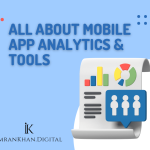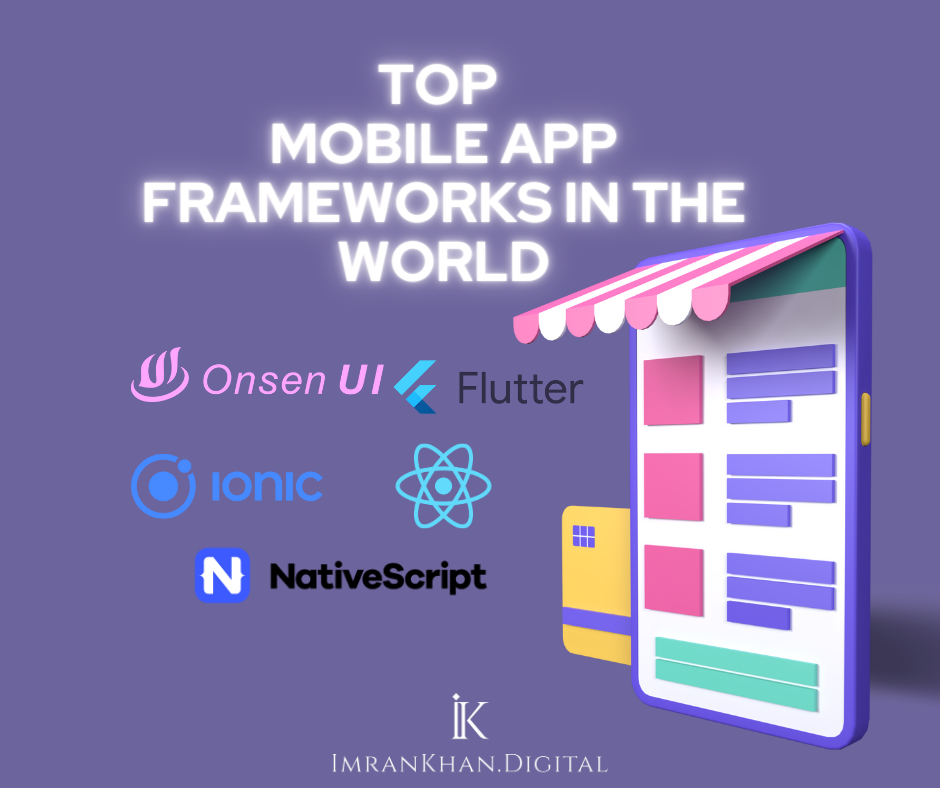
The mobile app development world has exploded in recent years, with more and more businesses and developers needing the most advanced technology to help build the next generation of great applications. As such, the top mobile app frameworks have grown in popularity.
These frameworks offer a powerful set of tools to help developers create faster and more efficient applications with a greater focus on design and functionality.
They also make it easier to share applications across multiple platforms, making them a go-to solution for mobile developers all around the world. With a combination of excellent support and performance, these frameworks offer a great starting point for creating amazing mobile apps. Let’s discuss the top mobile app frameworks.
Choosing the Right Mobile App Framework: A Comprehensive Guide
Choosing the perfect mobile app framework is indispensable to making a triumphant mobile app. In this piece, I’m going to review the multiple mobile app frameworks accessible, both native and hybrid, which are necessary for the building of a mobile app.
Examining the merits and downsides of each will help you decide which is the best framework for you and your app’s needs. By understanding all the various app frameworks, you will have the necessary information to be sure you are selecting the right one.
What is a Mobile App Framework?
Firstly let’s understand the mobile app framework. A mobile app framework is a collection of software development tools and programs used to create applications for mobile devices. It provides a fundamental structure to build on which streamlines the development process, allowing for faster and easier development.
Commonly, these frameworks offer features such as UI elements, networking and database capabilities, as well as a code-based workflow.
In addition, frameworks often feature app testing and optimization tools to ensure apps meet performance standards. Mobile app frameworks provide a cost-effective and powerful way for developers to build apps quickly.
How Does Mobile App Framework Work?
Let’s understand how it works. A mobile app framework simplifies the process of developing mobile apps, allowing developers to focus on creating an amazing user experience rather than starting from square one. It includes helpful features like animations, UI design, graphics, data storage, and other necessities that can speed up the development process.
By taking advantage of this software, developers can reduce the time spent building their apps and ensure that their apps are functional and reliable on different devices.
What is Native Mobile App?
Native mobile applications offer a superior user experience on mobile devices. Built for operating systems like Android and iOS, these apps make use of language and development kits specially designed for the mobile platform.
This provides access to GPS, notifications, and camera controls which regular apps cannot offer. By having the advantage of added functionalities, users can enjoy an experience which is smoother and more responsive than its counterparts.
What is a Hybrid Mobile App?
Hybrid Mobile Apps are a type of application that combine elements of both native and web apps. Downloadable from app stores, they offer the same user experience and features as native apps, yet don’t take as much time and money to create.
Hybrid apps can be developed by combining HTML, CSS, and JavaScript and can be used across multiple platforms, such as iOS and Android. The fast loading time and convenient development process is why Hybrid Apps are quickly becoming a preferred option for app creators.
What is a Cross Platform Mobile App?
No matter which type of device you use, a cross-platform mobile app is the perfect way to stay connected. With support for all major operating systems, it gives you the convenience of accessing your content across all your devices, so you never miss a beat.
And, with unified push notifications, you can stay up to date on the go. Plus, a common application store makes finding the apps you need a breeze. Get ready to go wherever you need to with a cross-platform mobile app!
What is Progressive Mobile App?
Progressive mobile apps are an innovative way of engaging with users on a mobile platform. They allow for quick and convenient interaction with content, delivering a seamless experience no matter what device we are using. With Progressive Mobile Apps, developers can create a wide range of experiences from data visualizations to interactive games.
By using native features of the device such as notifications, voice input and even device sensors, the user can create a truly unique experience. These applications are created using the latest technology, making them easily compatible across multiple platforms. With Progressive Mobile Apps, developers can reach their audiences with fresh content and cutting-edge features, helping to improve user engagement.
What is a Web Based Mobile App?
Web-based mobile apps are incredibly convenient. With web based apps you can access features you might not have on your device’s operating system. From managing your finances and staying productive, to shopping online and having fun on social media, these apps provide a wide range of options all accessible with a few clicks or taps.
Thanks to the web-based interface, these apps also work on all kinds of smartphones and tablets based on the screen resolution and the user experience is truly convenient and easy to use.
Mobile App Development Frameworks
React Native
Facebook Meta’s React Native is an ingenious open-source UI software framework with the potential to revolutionize app development. This flexible framework permits coders to craft applications across numerous platforms, from Android and Android TV to iOS, macOS, tvOS, Web, Windows, and UWP. Its unique ability to bridge the strengths of React with the power of native technology facilitates a completely new level of program engineering, granting developers access to comprehensive modern solutions across multiple platforms. React Native’s strengths even extend to virtual reality, with many Oculus programs featuring this ingenious framework.

Flutter
Google’s open source framework, Flutter, was first announced in 2015, and after two years, was officially launched in 2017. Its impact since has been immense – through Flutter, developers can create powerful applications across multiple operating systems from a single codebase. Be it Android, iOS, Linux, macOS, Windows, Google Fuchsia, or even the web – Flutter grants a suite of tools to let users craft innovative experiences across any platform.

Ionic
The Ionic Framework is a robust, open-source software development kit that allows developers to craft beautiful and interactive mobile applications using HTML, CSS, and JavaScript. The framework’s design elements like buttons, tabs, and navigation menus make creating sophisticated apps easier than ever. Plus, with the added power of Angular, you can streamline your development workflow while making complex coding simpler. The Ionic Framework is the ideal solution for creating reliable, feature-rich mobile projects quickly and effortlessly.

Sencha Ext JS
Sencha Ext JS provides the tools necessary to create powerful, data-intensive HTML5 applications using JavaScript. This comprehensive framework allows developers to easily develop robust, cross-platform web and mobile applications that perform optimally on any modern device. With pre-integrated, thoroughly tested high-performance UI components, Ext JS simplifies the development of complex data-driven applications.

Xamarin
With Xamarin, developers have the freedom to create cross-platform apps on any device, and any OS with the power of .NET and C#. Through its open-source libraries, developers have access to the latest technology, innovative tools and comprehensive support that simplifies app creation, development and maintenance. Xamarin brings the full capabilities of the .NET platform to Android, iOS, tvOS, watchOS, macOS, and Windows, enabling developers to write apps using C#, the modern and popular language.
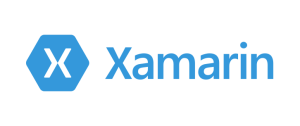
NativeScrip
NativeScript is an open source framework for building truly native mobile apps with JavaScript, TypeScript, Angular. NativeScript applications are built using web technologies like JavaScript, CSS, and XML. This allows developers to quickly create and deploy high-performance native apps across platforms with the same code base. NativeScript apps can be published on the Apple App Store, Google Play Store, and Amazon Appstore. Additionally, the framework has built-in support for a variety of popular third-party libraries and frameworks. NativeScript also has robust plugin APIs, so developers can extend the functionality of the apps they build.

Intel XDK
With Intel XDK, developing applications for smartphones and tablets is now simpler than ever. Just by knowing JavaScript and HTML5, users can build full-fledged apps for mobile phones and tablets with ease. Thanks to this powerful platform, designing engaging applications with intuitive user interfaces and cutting-edge features can be done without difficulty. Start creating with Intel XDK today and unlock a whole world of possibilities!
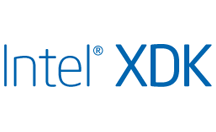
Framework7
Framework7 is an open source, free framework to create apps that look and feel like they were made for either mobile, desktop or web. Not only is it incredibly useful to prototype quickly and easily, it provides a comprehensive suite of user interface components, making it easy to craft powerful web apps, Progressive Web Apps (PWA) and native apps for both iOS and Android. It also provides compatibility with additional tools like Electron and NW.js to produce native desktop apps.
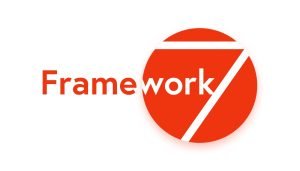
Onsen UI
Onsen UI is an innovative library of mobile UI components, featuring both Android and iOS Material design for a native-looking experience on each platform. From stack navigation and side menus to tabs and forms, there’s an expansive selection of components that offer endless possibilities for mobile app design. What’s more, Onsen UI lets developers easily develop cross-platform apps from the same source code without needing to create separate versions. That’s one less headache!

Ruby on Rails
With Ruby on Rails, there is no need to search far and wide for the tools needed to create impressive web applications on the client and server side. Rails allows you to quickly and easily generate HTML pages, access databases, send emails, maintain live pages through WebSockets, set up queues for asynchronous operations, securely store uploads in the cloud, and provide protection from common attacks. The possibilities with Rails go far beyond this list and open up an entire universe of options to users.

Swiftic
Swiftic framework is a comprehensive mobile app building platform and has almost everything. It’s designed to help small and medium businesses easily create their own mobile apps. It features a comprehensive range of tools that provide an end-to-end solution, from creating a custom design and choosing a template to submitting the finished app to the App Store and Google Play. The platform also includes analytics and promotion tools, enabling businesses to easily monitor and boost the visibility of their app.

Corona
Corona is the perfect choice for anyone looking to build an application or game for multiple platforms quickly. Its cross-platform capabilities make it possible to develop an app and then publish it across multiple types
of devices such as the iPhone and iPad, as well as Android phones and tablets. In addition, Corona is able to run on computers running Mac and Windows systems, and even allows for content to be played on TVs connected to Fire TV, Apple TV, or Android TV.
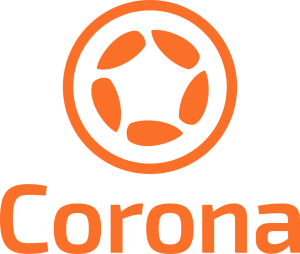
What is the best framework to develop mobile apps?
When we talk about mobile app development frameworks, there is no definitive right choice of framework. There are a range of considerations that must be taken into account when deciding on a particular framework.
Options like React Native, Flutter, Xamarin, and Ionic offer varying degrees of features, development times and levels of community support; selecting the ideal one for a project may depend on the project’s individual needs and specifications, the skills and experience of the development team, and the available resources and budget.
When choosing the best framework for a mobile app, it is important to recognize that there is not a universal option. It is necessary to do research in order to determine which framework best fits the app’s features.
What are the types of mobile apps?
Types of mobile apps can generally be broken down into three categories which we have discussed earlier.
1. Web Apps: These apps run in a browser and typically feature a mobile version of a website.
2. Native Apps: These apps are installed directly onto a user’s device and must be specifically coded for each platform, such as iOS and Android.
3. Hybrid Apps: These are essentially a combination of both web and native apps. The codebase can be reused and offers access to some of the features native apps offer, such as camera and GPS.
Is React Native better than Flutter?
It is truly a tough decision to make when selecting the perfect framework to build a mobile app – React Native or Flutter? React Native offers a great solution as it is based on the React JavaScript library created by Facebook, allowing for rapid app development with native-like apps.
Meanwhile, Flutter from Google is gaining lots of traction as it is simple to learn and use. However, in the end, both possess amazing features that cater to different needs, so it all boils down to which framework best suits the desired mobile app.
What is an application framework example?
An application framework is a software framework that provides a structure and set of tools for developing software applications. It typically includes a collection of pre-built libraries, APIs, tools, and components that can be used to simplify and accelerate the development process.
Some examples of application frameworks include:
- Ruby on Rails: A popular web application framework written in the Ruby programming language.
- AngularJS: A popular framework for building dynamic web applications using JavaScript.
- Django: A high-level web framework written in Python that encourages rapid development and clean, pragmatic design.
- Flask: A lightweight web framework written in Python that is often used for smaller web applications or prototypes.
- Laravel: A PHP web application framework that emphasizes elegant syntax and developer productivity.
- .NET Framework: A Microsoft framework for building Windows desktop applications, web applications, and services.
- Ionic Framework: A popular mobile app development framework based on AngularJS and Apache Cordova.
These are just a few examples of the many application frameworks available for various programming languages and platforms.
Mobile app development framework comparison
There are several popular mobile app development frameworks available today, each with its own set of advantages and disadvantages. Here is a brief comparison of some of the most widely used mobile app development frameworks:
- React Native:
- Developed by Facebook, it allows building cross-platform native apps for iOS and Android with JavaScript and React.
- It has a large community and a vast number of pre-built components and libraries available for use.
- It uses a single codebase and allows for rapid development and deployment.
- It has good performance, but it can be slower than native development for complex apps.
- Flutter:
- Developed by Google, it allows building cross-platform native apps for iOS, Android, and the web with the Dart programming language.
- It has a fast development cycle and provides a customizable widget set.
- It has good performance and can provide near-native performance.
- It has a smaller community and a relatively new framework compared to React Native.
- Xamarin:
- Developed by Microsoft, it allows building cross-platform native apps for iOS, Android, and Windows with C# and .NET.
- It provides a large set of pre-built components and libraries, and it can integrate with Microsoft’s development tools.
- It has good performance and provides access to native APIs.
- It can have a steep learning curve, and the development cycle can be slower than other frameworks.
- Ionic:
- It allows building cross-platform apps using web technologies like HTML, CSS, and JavaScript.
- It provides pre-built UI components and a customizable design system.
- It has good performance and allows for rapid prototyping.
- It can have slower performance compared to other frameworks, and it may not be suitable for complex apps.
Ultimately, the choice of mobile app development framework depends on various factors, including project requirements, team expertise, development speed, and available resources. Developers should evaluate the pros and cons of each framework and choose the one that best fits their needs.
Final Words
In conclusion, mobile app development frameworks are a powerful and necessary tool for businesses that need to develop apps quickly and effectively. These frameworks make the development process much more organized, reliable, and cost-effective, as well as increasing the scalability of the end product. Developers are able to leverage features, functionality, and updates that these frameworks provide, while businesses can rely on them to produce quality results.


